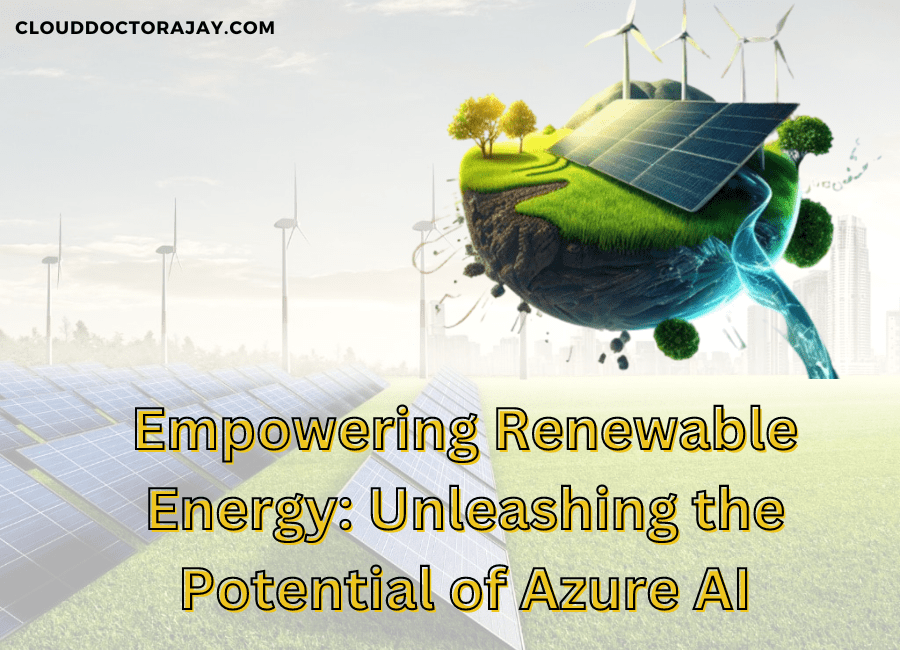Introduction Renewable Energy:
The incorporation of renewable energy technology has become critical in the quest for a sustainable future. Artificial intelligence (AI) and other cutting-edge technologies are playing an increasingly important role as we handle the complexity of climate change and the energy transition.

Leading this change is Microsoft’s Azure AI, which provides cutting-edge solutions that optimize and improve renewable energy technology. In this blog post, we will investigate the convergence of Azure AI and renewable energy, looking into the ways in which this potent combination is promoting efficiency, sustainability, and resilience.
1. Predictive maintenance and smart grids:
Azure AI is making it possible to create smart grids, which is completely changing the renewable energy environment. These clever systems use artificial intelligence (AI) algorithms to maximize the production, sharing, and use of renewable energy.
Azure AI-powered predictive maintenance models examine data from solar panels, wind turbines, and other renewable resources to anticipate possible problems before they happen. By maximizing the lifespan of crucial components and minimizing downtime, this proactive strategy lowers overall maintenance costs and boosts operational effectiveness.
Read More: Azure AI: Revolutionizing Technologies for Renewable Energy in an Ecological Future
2. Forecasting and optimizing energy:
The intermittent nature of renewable energy is one of its main obstacles. By offering sophisticated forecasting models that anticipate energy production based on a variety of variables, such as weather, historical data, and real-time performance indicators, Azure AI solves this problem.
Renewable energy operators may provide a steady and dependable power supply by optimizing grid management, storage, and distribution through precise energy production prediction.
3. Energy Efficiency and Demand Response:
Azure AI matches energy supply and demand by evaluating real-time data, hence facilitating demand response initiatives. This encourages energy economy and makes it possible to better manage peak demands. Renewable energy suppliers can help maintain grid stability and lessen need on non-renewable backup sources during spikes in demand by using AI-driven demand response systems.
4. Security and Resilience of the Grid:
The stability of the electricity grid as a whole depends on how resilient renewable energy sources are. Azure AI regularly monitors and analyses data for anomalies, which is a critical component in improving grid resilience.
AI systems are able to efficiently allocate resources, reroute energy flows, and promptly detect problems in the event of outages. Furthermore, Azure’s strong security measures protect against online attacks, guaranteeing the dependability and integrity of infrastructure for renewable energy sources.
5. Reducing Carbon Footprint:
Azure AI helps minimize the carbon footprint of renewable energy technologies in addition to improving energy production and consumption. In order to create a more ecologically friendly and sustainable energy ecosystem, machine learning algorithms are used to help find chances for efficiency improvements.
Read More: Cloud Migration Process: A Comprehensive Guide for Transition and Performance
Conclusion Renewable Energy:
The combination of Azure AI with renewable energy technology is a game-changer as the world rushes towards a more sustainable and greener future. The renewable energy industry is entering a new era of efficiency and resilience because to Azure AI’s potent capabilities, which range from demand response and carbon footprint reduction to predictive maintenance and more.
We can expedite the world’s shift to clean and sustainable energy sources by utilizing AI’s capabilities, opening the door to a more optimistic and ecologically conscientious future.




